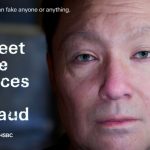Martin Sorrell, chairman and chief executive officer of WPP, the world’s largest advertising company,
speaks at the Confederation of British Industry’s (CBI) annual conference in London.
WPP cut its sales expectations for the third time this year on Tuesday and said net sales would not grow in 2017, with weak client spending and technological disruption putting it on course for its lowest growth since the financial crisis.
The bleak outlook from the world’s largest advertising company and similar forecasts from peers have prompted fears of structural change as consumer goods giants like Unilever cut spending and Google and Facebook transform the industry.
Competition among the big four of WPP, Omnicom, Publicis and Interpublic has become fierce as clients review the effectiveness of their marketing budgets.
WPP has felt this acutely in the U.S., where it has lost two big accounts to Omnicom, and investors were braced for bad news. WPP said net sales would not grow this year, initially knocking its shares on Tuesday, before they recovered to rise 2.5 percent to 1327 pence at 1235 GMT.
The British group has been hit more than most by the pressures in the packaged goods sector, where its clients such as Unilever, Nestlé and Procter and Gamble are cutting spending as consumers turn to more niche brands and its shares are down 30 percent so far in 2017.
“The biggest pressure is coming on the packaged goods companies in particular, which are around 30 percent of our revenue, and they’re under colossal pressure,” Martin Sorrell, chief executive and founder of WPP, told Reuters.
WPP said the focus on cost had also helped new competitors in the field, with consultancies including Accenture, Cap Gemini and Deloitte offering data, analytics and reviews on the effectiveness of marketing spend.
“Very few CEOs will resist the suggestion that they may be overspending,” WPP said, adding that the focus on costs was likely to continue although perhaps at lower levels after one-time reductions this year, which are tougher to repeat.
Some other clients are making adverts in-house to place on Facebook and Google, cutting out the middlemen. However, WPP said the two platforms remain crucial destinations for their ad spend, calling them “friendlier frienemies”
PANIC BUTTONS
WPP’s outlook highlights a difficult year for the British firm and the wider industry.
After organic net sales growth of 3.1 percent in 2016, WPP rattled investors in March when it set a 2017 target of 2 percent before cutting it in August to between 0 and 1 percent.
The group said it now expected like-for-like net sales growth to be flat. The headline net sales operating margin was also now expected to be flat, compared with a previous forecast of a 0.3 margin point improvement.
But WPP’s third-quarter trading holding up reasonably well, with like-for-like net sales down by 1.1 percent, an improvement on the 1.7 percent drop recorded in the second-quarter and a market expectation of -1.4 percent.
Some analysts said they had expected weak results and noted the group will have to perform well in the fourth quarter, while others said recent declines had left the stock fairly priced.
“While it’s not time to hit the panic button, one has to worry whether things might get worse before they get better,” George Salmon, equity analyst at Hargreaves Lansdown, said.
Analysts at Barclays said it was difficult to call and this made WPP a “risky investment”.
“If you cut agency fees in 2017 and get the same service, why not do it again in 2018,” they said. “And if consumer goods companies were successful in doing so, why would that pressure not extend to other sectors in 2018. Reuters
MARKETING Magazine is not responsible for the content of external sites.











